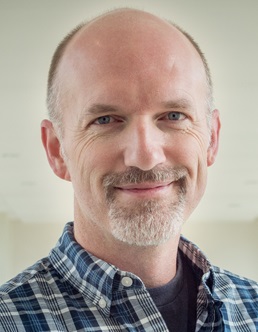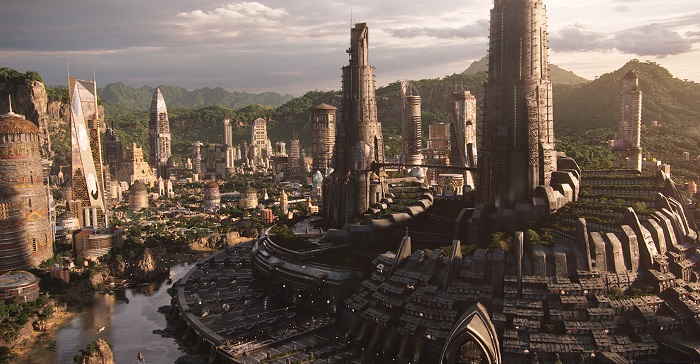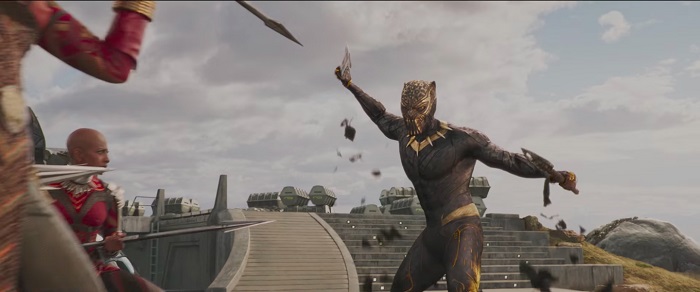
Marvel’s Black Panther was a box office rage in more ways than one. The Ryan Coogler directorial didn’t only smash every record on the books to smithereens en route to its $1.5 billion gross collections, but also touched hearts, all and sundry.
Among the many facets of the movie, the amazing visual effects, pulled together by as many as 10 studios across the globe, brought an ocular feast which made the viewing experience vivify all the more. Industrial Light & Magic were among the chiefs to have helmed the project and deliver a sizeable chunk of the VFX for the movie.
Supervisor Craig Hammack is known to have cast his spell with visual nirvana in Rogue One: A Star Wars Story, but was upbeat to lay his hands in a Marvel production for the very first time.
“Between our San Francisco and Vancouver offices, we had a crew of 252 people who worked approximately 13 months on the project. Our shot count for the movie was 414 shots,” he claims.
With so many studios involved, the work would naturally be divided, and the prominent task of ILM on the movie was creation of the pristine Wakanda, the African kingdom where it’s all set. “Most of the ILM work was concentrated on establishing the environment of Wakanda. We did all of the Golden City work including all scenes in the Tribal Council Chamber and steptown streets. In addition, the most noteable ones we worked on are Wakandan border tribe scene where we first meet the rhinos; the panther dream scenes when T’Challa goes to the surreal ancestral plains; the hall of kings scenes, where their herbs are grown and the burial ceremonies take place; the end battle aerial dogfight; the return to Wakanda scenes at the beginning when they first fly through Wakanda and land on the landing pad and are greeted by his mother and sister.”
As aforementioned, Black Panther has many elements that make it cut from a different cloth, and the settings of Wakanda are certainly one of them. Futuristically beautiful while rich in flaura and fauna, the fictitious African land piqued many an imagination with the pulchritude of top order, and Hammack takes a trip down the memory lane to recall all that went into its making: “Wakanda was inspired by many things. The natural environments were taken from real world locations that were photographed and scanned in Africa. The architecture and design aspects were driven by the concept art and reference book provided to us by the production designer Hanah.

“So the creation in CG involves an initial real world scanned location and photography that then gets sculpted and rebuilt to fit our needs. Then the main city architecture is built by our modelling department and given to the ILM generalists group led by Dan Mayer and Kevin George. That group assembles those major components and then continues to populate with tens of thousands of buildings and digital set dressing along with tens of millions of trees and organic elements. We end up with a general environment of the city and then very talented artists from the generalist group build out high detail sections for the specific scenes like the landing pad and step town market.”
Creating something grandoise comes with its own challenges. And here’s the one pertinent challenge while designing the Wakandan kingdom: “I would say the largest issue we had to deal with was just the scope and scale of the city along with the unique requirements of mixing the old world elements of tribal africa into what is essentially the most highly technologically advanced civilisation on the planet. It makes for a very unique and specific look and feel that standard city building tools and techniques don’t achieve.”

But what was the co-ordination with other studios like? “We were fortunate to have a great production team both at ILM and on the studio side. There was constant communication flow and the production side coordinators were the hub of the information that flowed between all the facilities.”
However, creating Wakanda wasn’t still the stiffest challenge they would come across.
The climax of the movie witnesses the kingdom turning into a war zone as Erik Killmonger and W’Kabi’s tribe wage a colossal war against T’Challa and the Dora Milaje to capture Wakanda and execute the former’s sinister schemes. Well, the fight sequence may be on a par with Marvel’s astronomic standards, the process of making it emulate is what Hammack describes the most difficult. He says, “I would say the most challenging would definitely be the war sequence, which is the return to Wakanda. This is where we first get a good look at Wakanda. The variety of terrain combined with the eventual long travel shot as we fly through the city made for some very intensive work. The all CG environment on the landing pad was part of that as well. This was particularly challenging as the scene is an important and long dialogue moment.”

“There is an added burden when it is a quite and simply staged scene like this. The audience has a lot of time to stare at the world without a lot of camera movement. If you screw that up there is a good chance that the audience won’t even pay attention to the dialogue at all,” he further added.
Travailing an experience it may have been, but Hammack also sees the other, rewarding side of it, implying the creative satisfaction and a sense of accomplishment that come after pulling it off, that makes the same war sequence, also his most memorable one.
When asked about his next VFX sojourn, he teased another high-octane actioner: “Skyscraper, a Rawson Thurber directed action movie with Dwayne Johnson.”

